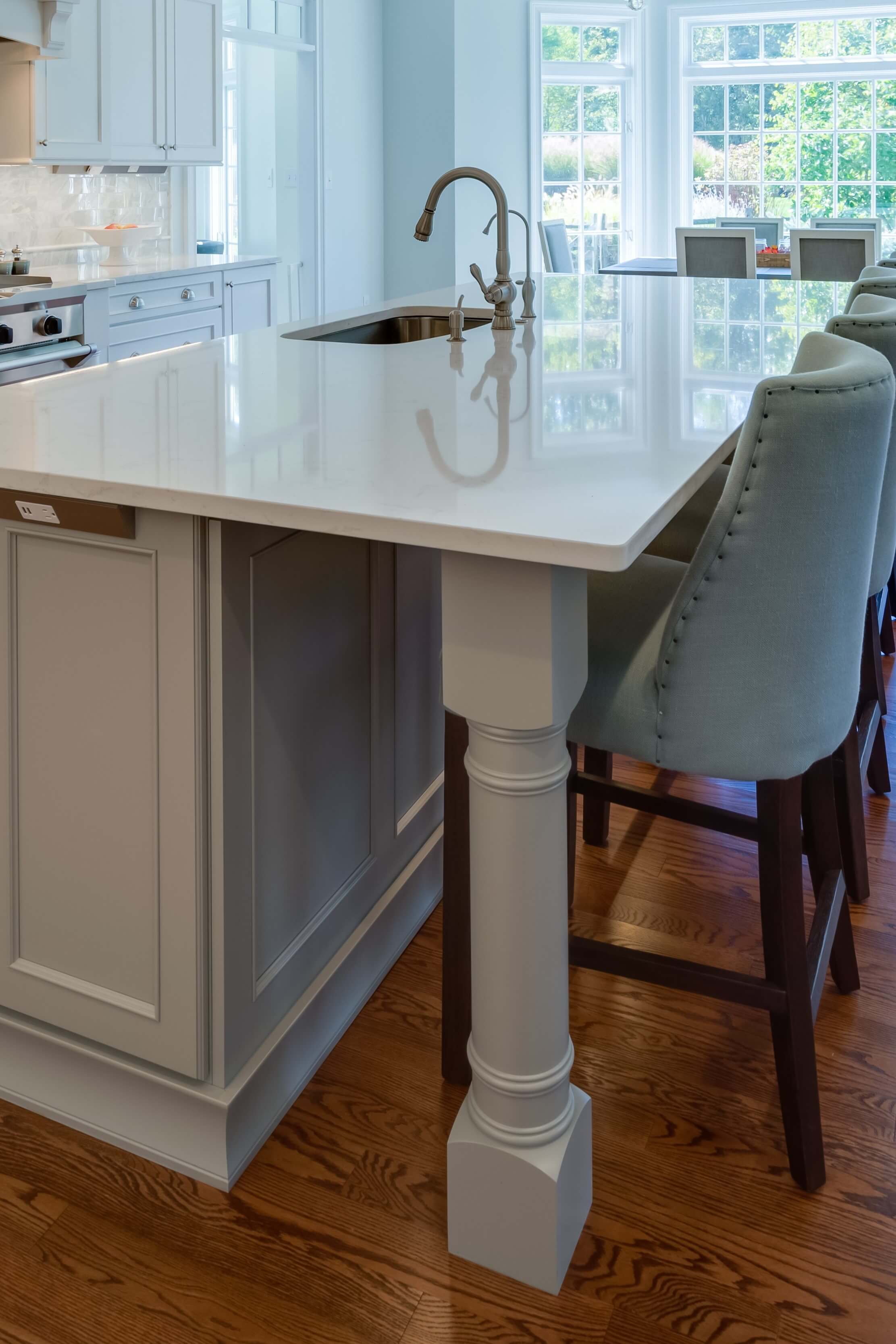Necessary Aspects to Take Into Consideration When Picking Legs For Kitchen Island
Choosing the suitable legs for a cooking area island involves a mindful evaluation of several variables that can significantly influence both capability and aesthetic appeal. As we explore these components, it becomes clear that each decision can have significant ramifications for the total kitchen experience.
Material Options
When selecting legs for a kitchen area island, understanding the different product choices is crucial for attaining both aesthetic allure and architectural honesty (Legs For Kitchen Island). The choice of product significantly influences not only the longevity of the island however additionally its overall layout and performance
Wood is a preferred choice, offering warmth and convenience. Strong hardwoods, such as oak or maple, provide strength and can be tarnished or repainted to match the cooking area decoration. Metal legs, often made from stainless steel or functioned iron, contribute a modern and commercial feeling while ensuring sturdiness and security. These products are resistant to wear and can sustain considerable weight, making them perfect for larger islands.
One more option is crafted materials, like MDF or plywood, which can be much more economical while still offering an array of surfaces. However, they may not offer the very same degree of security as solid wood or metal. Materials such as acrylic or glass can create a contemporary appearance, though they may need added support to guarantee security.
Ultimately, the selection of product for kitchen island legs must straighten with the wanted functionality and the total style of the cooking area.
Design And Style

When taking into consideration style, the form and finish of the legs are crucial. Tapered legs can supply a feeling of agility and beauty, while thicker, more durable legs can communicate toughness and stability. In addition, the coating-- be it painted, stained, or all-natural-- must match the cabinetry and counter top products to create a unified appearance.
Furthermore, the layout of the legs can also mirror individual taste. Custom-made or attractive legs, such as those including detailed makings or distinct geometric shapes, can serve as prime focus, including personality and character to the cooking area. Ultimately, the appropriate option will not only improve performance but likewise elevate the visual charm, making the kitchen area island a standout feature of the home.
Height Factors To Consider
Selecting the appropriate elevation for cooking area island legs is critical, as it directly affects both capability and comfort. The conventional elevation for a cooking area island generally ranges from 36 to 42 inches, straightening with common counter top heights.

It is additionally necessary to account for customers' heights and choices. Tailoring the height can make certain a comfortable experience for all member of the family, making the kitchen area island a more enjoyable and functional space.
Weight Support
Making certain ample weight assistance for kitchen island legs is crucial for both safety and functionality. The cooking area island commonly serves numerous purposes, consisting of cooking, eating, and added storage, requiring a robust assistance framework. When choosing legs, it is critical to take into consideration the general weight ability required based upon the island's meant use and the materials that will be put on it.
The choice of material for the legs plays a considerable function in their weight-bearing capabilities. Strong wood, metal, and heavy-duty compounds usually offer remarkable toughness contrasted to lighter products. Furthermore, the layout of the legs-- whether they are right, tapered, or have a pedestal kind-- can affect their capacity to disperse weight properly throughout the framework.
Additionally, the leg positioning must be tactically planned to enhance security. Legs placed at the corners or with a larger base can much better sustain larger loads. Always speak with the manufacturer's requirements relating to tons restrictions to ensure that the legs can sustain the intended weight without jeopardizing security. In summary, selecting cooking area island legs with ample weight support is essential for producing a risk-free and practical culinary area.
Setup and Upkeep
Correct installation and maintenance of cooking area island legs are vital for guaranteeing long life and stability. This frequently entails protecting the legs to the island base making use of proper visit this website fasteners, making certain that the legs are level and straightened.
When set up, regular maintenance is necessary to preserve the integrity and appearance of the legs - Legs For Kitchen Island. For wood legs, periodic cleansing with a moist towel and application of appropriate wood polish can avoid wetness damage and preserve their coating. Steel legs may require a gentle cleansing solution to get rid of oil and crud, followed by a dry cloth to protect against rust formation
Additionally, examine the legs routinely for signs of wear or damage, such as cracks or loose joints. Tightening screws or screws as needed can additionally extend the life-span of Visit Website the legs. By adhering to these setup and maintenance practices, house owners can make certain that their kitchen island stays durable and aesthetically appealing for years to come.
Final Thought

Aesthetic comprehensibility is paramount in selecting the style and design of legs for a cooking area island, as these components considerably affect the general atmosphere of the space. Conical legs can provide a feeling of agility and elegance, while thicker, more durable legs can share toughness and security.Picking the ideal elevation for cooking area island legs is crucial, as it directly influences both capability and convenience. In recap, picking cooking area island legs with appropriate weight assistance is vital for producing a risk-free and practical culinary room.
In verdict, picking legs for a kitchen area island requires careful consideration of numerous variables, consisting of material options, design, elevation, weight support, and installation.